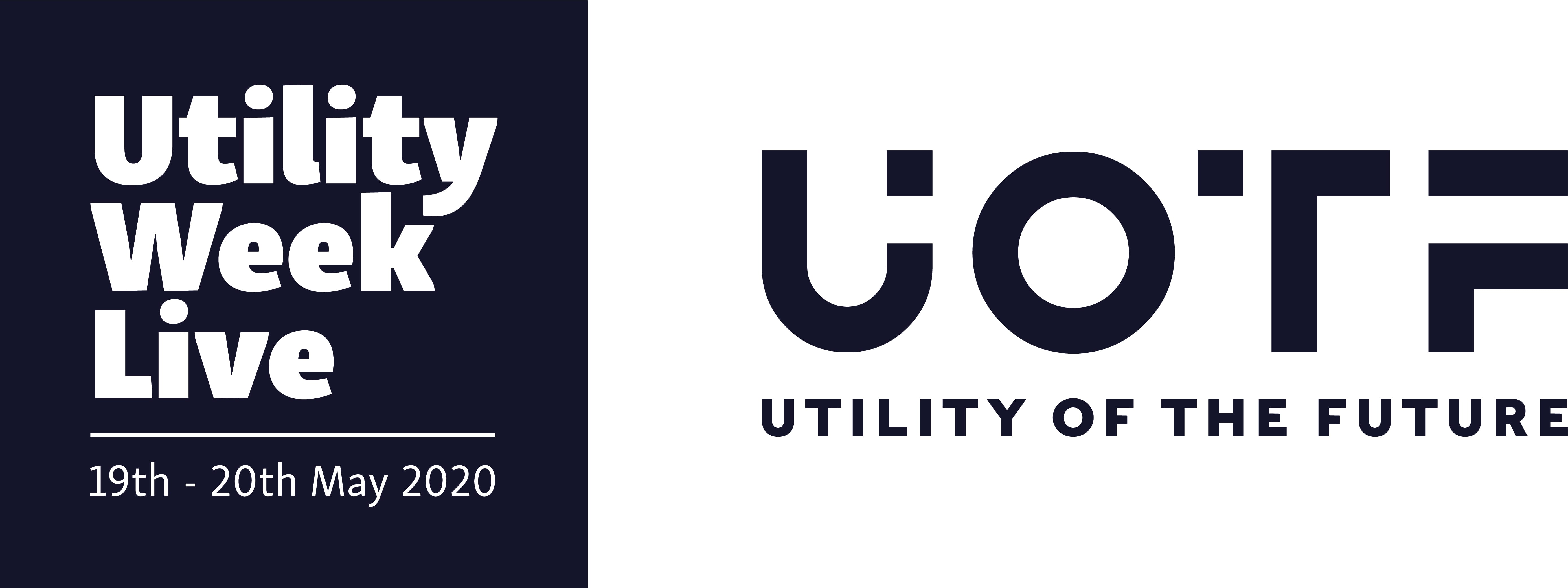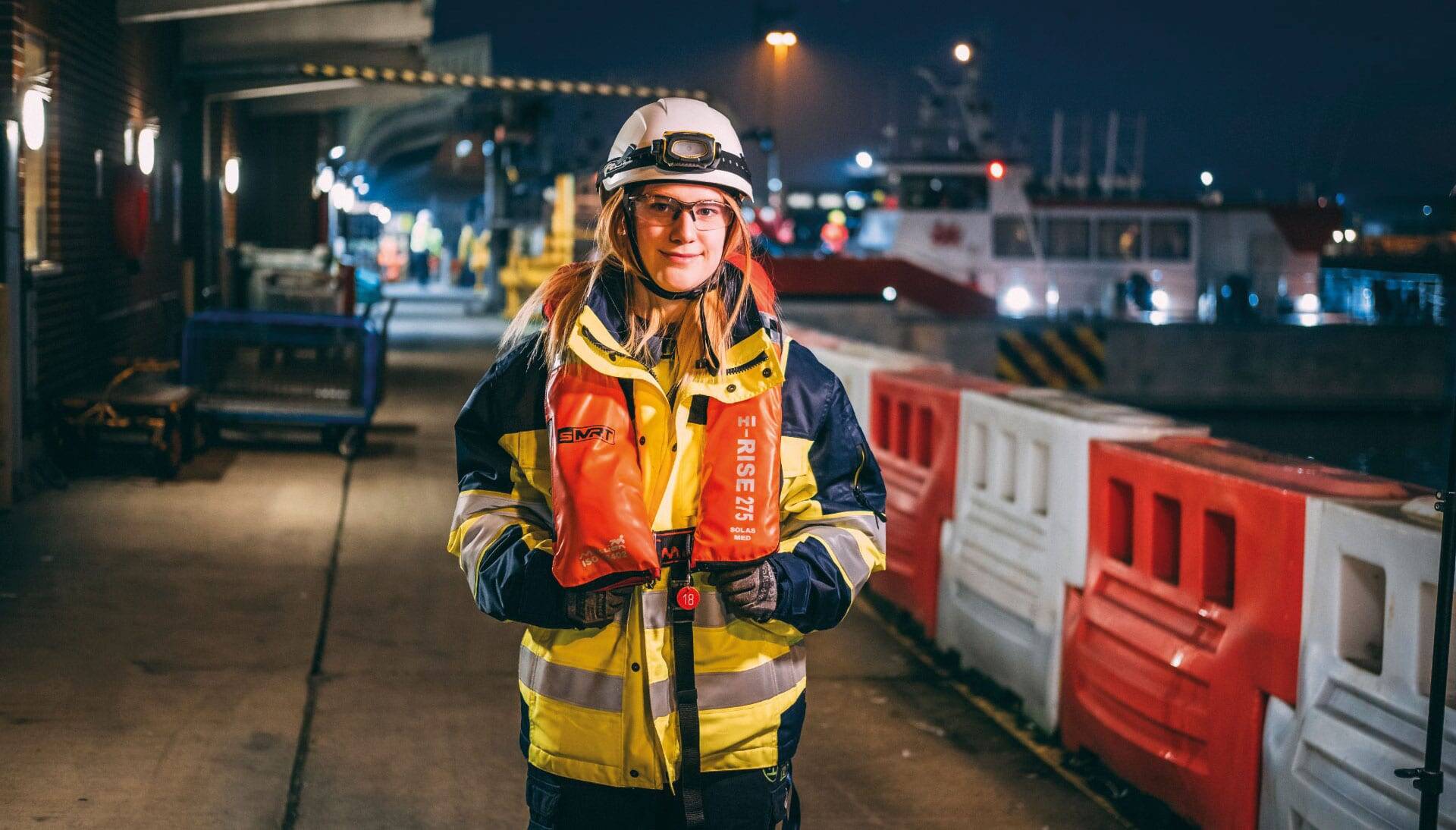This is the Sponsored paywall logged out

The utilities sector was heading for a skills shortage even before the challenge of meeting net zero emerged. In the first part of this report, EU Skills’ Nick Ellins sets out the scale of the problem – and in the following pages we suggest some solutions.
 Whatever your viewpoint on Brexit, the pre-recorded Big Ben bongs followed by pallid illuminations on to No 10 Downing Street seemed an unceremonious end to a long UK union with its European partners.
Whatever your viewpoint on Brexit, the pre-recorded Big Ben bongs followed by pallid illuminations on to No 10 Downing Street seemed an unceremonious end to a long UK union with its European partners.
 But immediately the promised policy announcements started, even though their full impact will become apparent only once the Budget outcome and Cabinet restructure is clear.
But immediately the promised policy announcements started, even though their full impact will become apparent only once the Budget outcome and Cabinet restructure is clear.
Even before then, we know that infrastructure is being cited as a golden egg for the economy, and “skills” have immediately taken centre stage with political figures weighing in.
Home secretary Priti Patel said employers have become “far too reliant” on cheap labour from the European Union, and that ministers will prioritise migration of high-skilled workers. Prime minister Boris Johnson echoed these sentiments, seeking to restrict access to lower skilled migrant workers earlier than stated, to stimulate British jobs for British workers.
The newly planned “Global Talent Visa” was announced, seeking to make the UK open to fast-track access from the best global talent.
Education secretary Gavin Williamson briefed the New Statesman on “environmentally led learning” and his job to “make sure that we meet our environmental obligations by equipping our workforce with the right skills”.
“People need to learn about environmental sustainability and prepare for a greener future. Green industries that will be the employers of tomorrow are rapidly evolving,” he was quoted saying.
Immediately the counterpoints appeared, with the first minister for Scotland, Nicola Sturgeon, explaining the stress that Scotland remains under for the quantity and quality of workforce it requires, declaring: “The latest proposals from the UK government to control immigration and end freedom of movement would be disastrous for our economy and society and would risk acute labour shortages.”
The Migration Advisory Committee analysed the planned post-Brexit system and said it felt it “could cut economic growth” and have a “zero effect” on providing more British jobs for British workers.
The increasingly fragmented and education-led subject of “skills” was suddenly a key economic piece on the chessboard.
During this policy noise, the Office for National Statistics quietly released its UK labour market evidence. For those wanting to source “British workers” above migrant talent, the UK employment rate hit a new high that went even beyond the record 2019 year. A further 359,000 people had moved into work.
Unemployment fell to its lowest level since 1975, with 618,000 fewer people available than five years before. Of those not currently available for work now, but possibly available in future, levels also sank to a record low.
For businesses publicly stating that they will achieve a more representative balance of females in their workforce, the employment rate for women reached a record high. Just 3.6 per cent of females remained unemployed and available for work, meaning that if UK companies were to secure female talent at all levels, they could either fight among the 3.6 per cent or poach from each other.
The same situation exists for “hard to reach groups”, including 16 to 18-year-olds and the less-abled. The available talent pool is strictly limited.
At the same time as the labour market is constrained, 805,000 job vacancies exist in the UK. Every major UK business sector is indicating that they have difficulty in filling skilled vacancies, with many desperate for the same “lower skilled workers” that the government is seeking to restrict, and who are pivotal for maintaining core service levels right across the economy – including UK infrastructure.
The UK utility sector, therefore, faces the tightest labour market and competition for talent on record in what is deemed a time of “economic full employment” by HM Treasury. It also faces expensive and competitive access to the very talent pools it wants to recruit from, as it searches for more inclusion and diversity.
This comes just as the prime minister and the education secretary voiced their support for the sector’s future, stating that environmental infrastructure will be critical to the future of the post-EU economy.
Planned carefully, and with a competent body holding the lid of the puzzle box to help bring together the myriad of jigsaw pieces forming the £600 billion National Infrastructure Plan, it is possible to balance the physical capital needs with the human capital available. But it will need joined-up thinking.
The Institution of Civil Engineers has already sounded the first cautionary note, advising: “While it’s good to see that infrastructure appears to be high on the new government’s list of priorities, there’s a risk that we might end up with a list of isolated projects. What we need is a more joined-up approach to ensure the UK maximises the full potential of any investment”
Its comments mirror those of the admired Sir John Armitt, chairman of the National Infrastructure Commission (NIC). He has set out the need for joining the dots to achieve the zero carbon transition. Back in July 2018, the NIC said “delivery of high quality infrastructure also depends on the availability of the right skills… and the depth of the supply chain”
In its report at that time it wrote: “The UK’s exit from the EU will impact the UK’s skills base and supply chain; there should be a strategic approach to manage this. These areas are the remit of the Infrastructure and Projects Authority rather than the Commission. Therefore they are not covered in this chapter, but they remain critical.”
The Infrastructure and Projects Authority referred to sits at the heart of government and reports directly to the Treasury. It is responsible for the National Infrastructure Plan for Skills, but this plan is years out of date, misaligned with the restricted labour market and Brexit, and all but ignores the utility infrastructure that the prime minister is now relying on for growth. The arrival of a new chief executive, Nick Smallwood, will hopefully see this rectified.
While the NIC explicitly knew that skills were critical, when its moment came to give the very “strategic nudge” the chancellor asked for, it stalled.
In 2018, the chancellor commissioned the NIC to study the resilience of UK infrastructure. Asked to advise government on how to best assess resilience, plan for unexpected shocks, and review the costs and benefits of measures to improve resilience, the terms of reference were odd, advising: “Issues relating to foreign ownership … the security of supply chains and issues relating to the EU withdrawal” are out of scope.
It did, however, say: “Analysis of malicious threats, skills and the financial stability of infrastructure operators are expected to be limited to the scoping stages of the study.”
Hopes quickly rose, with expectations that the NIC would call for a joined-up approach to labour market resilience. But despite extensive consultation evidence to point to, the NIC advised: “Analysis of malicious threats, skills and the financial stability of infrastructure operators were limited to the scoping stages of the study, which this report completes, and so will not be considered in future work.” And: “These wider issues are all important for delivering resilience overall. However, they will not be a focus for the main study, as where action is necessary, it will need to be taken forward in the short term by government. Skills and malicious threats will manifest very differently across the system and different sectors.”
A wide-open door slammed shut.
With European exit now fully under way, infrastructure and skills are both cited as long-term energisers for the UK economy and environment. A rare and vital second door has opened, offering the chance to ensure that the UK utility sector is recognised as of key strategic value, and that the labour market and skills policies are aligned to help ensure a skilled, safe, diverse, innovative and productive workforce can deliver success for the nation.
Nick Ellins, chief executive, Energy & Utility Skills
Solution 1: Boost training
Cast the net wide
SSE’s John Stewart says the government’s Apprenticeship Levy could, and should, be skewed to bolster the energy sector.
 The UK government has ambitious targets to achieve net zero by 2050 – 2045 in Scotland – and we need a skilled workforce ready to deliver.
The UK government has ambitious targets to achieve net zero by 2050 – 2045 in Scotland – and we need a skilled workforce ready to deliver.
As a major developer and operator of low-carbon assets and infrastructure, SSE is well placed to be at the frontline of delivering on these goals. The decarbonisation of the UK will require a huge push to develop, build and upgrade massive swathes of infrastructure.
And we are going to need a mighty green workforce to help us do this. For young people, who have been at the centre of the climate change movement, they have the opportunity to kick-start a meaningful career where they’ll be at the forefront of climate action.
Our business is investing £6 billion over five years to help decarbonise the UK and Ireland, so apprentices coming into the energy sector have a bright future.
But our industry, as with many others, faces its challenges. The energy sector has a well known future skills gap, which will be exacerbated by retirement at a time of growth – particularly in certain areas.
In the past five years, SSE has recruited more than 650 apprentices with around £80,000 invested in the training and development of each of them. And they have long-term careers with us – 92 per cent stay with the business once their traineeship ends.
 Apprentices joining the business can take up a wide variety of roles, from working on renewable assets such as wind farms to maintaining the flexible electricity grids to transport clean energy.
Apprentices joining the business can take up a wide variety of roles, from working on renewable assets such as wind farms to maintaining the flexible electricity grids to transport clean energy.
We also have to widen our appeal to attract more people who may not have considered a career in energy. That for us means thinking differently and doing things differently.
As a business we’ve taken a new approach to apprentice recruitment in order to widen access. We realised that by having restrictions on qualifications we may be inadvertently screening out candidates who have the potential to be great, or come from more challenging backgrounds which has impacted on their educational performance.
Our new approach has seen us look not just at qualifications or skills, which can be developed, but rather select against innate strengths which are defined as something you do well, enjoy doing and do regularly.
Research has shown that moving from a skills to strengths approach, such as Drive, Ownership and Safety, which we defined and validated as being essential for our specific SSE apprenticeships, can result in more engaged and productive employees who are willing to stay, increased diversity of applications and hires and innovative, efficient practices.
If the industry is going to retain and grow this talent from a wider, more inclusive pool, we need to make sure that apprenticeships are enjoyable and engaging. And we believe this new approach will broaden access to the sector and improve the apprenticeship journey.
But that is just half the picture. What about government policies?
If the policy of training and developing future generations is about getting them into meaningful employment – which it surely must be – funding and delivery models should be focused on not just contributing to initial training delivery costs, but set in a way that the creation of sustainable employment can be recognised and rewarded.
In reality this would mean that funding wasn’t just set to reflect a contribution to the cost of delivering training but that funding also rewarded the creation of sustainable jobs by providing some financial reward if the apprentice was still employed say three years after successful completion of training.
Apprenticeship spending too is projected to exceed current Apprenticeship Levy funding – the tax on employers which can be used to fund apprenticeship training.
Decisions need to be made regarding future funding choices. As a sector critical to the delivery of a low-carbon economy, there should be consideration of allowing greater access to levy funds for employers in sectors designated as essential to the government’s Industrial Strategy.
Levy funds should also be retained within the sector and be used for tackling skill shortages and developing skills which will be vital to achieving ambitious government targets. By their very nature an apprentice working in the energy sector must be considered vital to net zero. In this sense government must do all it can to help to get them in the race.
John Stewart, director of HR, SSE
Solution 2: inclusion and diversity
UKPN: everyone’s invited
Last year UK Power Networks won the Utility Week Diversity Award. Here, Jean Kelly outlines the company’s success so far in tackling diversity and inclusivity and explains what more there is to do.
 A diverse and inclusive team creates a positive, productive business that makes every employee proud and comfortable to work for us. Also, with 6,000 staff in 128 locations spread across three regions, it’s important we recruit and retain a diverse workforce to look after and reflect the interests of people in the 8.3 million homes and businesses that receive our power.
A diverse and inclusive team creates a positive, productive business that makes every employee proud and comfortable to work for us. Also, with 6,000 staff in 128 locations spread across three regions, it’s important we recruit and retain a diverse workforce to look after and reflect the interests of people in the 8.3 million homes and businesses that receive our power.
We were the UK’s first electricity distributor to sign up to the National Equality Standard, which has accelerated our diversity and inclusivity (D&I) activities, improved the way we attract, develop and retain our diverse talent and provided us with a comprehensive framework that allows us to integrate D&I into all areas of our business, then track, measure and monitor our progress.
Recruitment
In addition to creating a fair environment for our employees where they can perform at their best, we also appreciate the need to be adaptable to changes in the talent market, infrastructure services and legislative requirements.
In the past year we have focused on recruiting diverse talent into our industry to be more representative of the growing diversity of the UK’s workforce.
Ten of the 27 schools we attended in 2018 as part of our recruitment campaign had a majority of BAME students from disadvantaged areas. We have recruited six former students from there. We received 67 applications for less than 20 apprenticeships, from six schools where we successfully recruited, which was 10 per cent of total applications.
We now use a range of diversity job boards such as Vercida to find the best candidates for roles, and take steps to remove barriers and minimise bias in our recruitment process.
As part of our recruitment process we introduced a “blind CV”, removing names and personal details. This increased BAME apprenticeships from eight to 15 in 2018, and BAME graduates from 50 per cent to 64 per cent the same year. Overall we have increased our BAME intake from 12.5 per cent in 2018 to 16 per cent in 2019.
Looking at possible gender bias in our adverts, we identified 35 phrases deemed masculine when advertising a vacancy for a project manager. For example, on one advert changing the “project manager” to “you”, “lead” to “manage”, and “KPIs” to “meaningful metrics”. As a result we saw an increase in female applicants from 8 per cent to 12 per cent for this vacancy.
Staff retention
It’s not just about people coming into our business. In addition to recruitment, our Together the Best campaign focuses on developing a culture of retaining our diverse workforce, by ensuring all employees have equal access to development and career progression.
We recently reduced our gender pay gap, with more women progressing into leadership roles, and this will continue to be our focus for 2020.
Leadership buy-in is essential to drive change, so we recorded videos where business leaders talked about what inclusive leadership meant to them – to role model the correct behaviours.
Our Together the Best campaign also launched our EMPower Community during National Inclusion week in 2018. More than 180 staff joined, including management. Lynne McDonald, chair of the still growing EMPower Community, said: “This is a platform for employees to raise suggestions, issues and improvements around diversity and inclusivity.”
The EMPower Community suggested we celebrate more awareness days, so we took part in the 50th Pride March in London in July and used a Pride-themed logo on LinkedIn.
A new outreach programme was born out of us asking the EMPower Community for ideas. It offers schools and colleges work experience for female students, “try before you apply” interactive workshops, and tester sessions led by female field staff. Embracing diversity also extends to community activities – which can enhance employees’ understanding of diverse perspectives. UK Power Networks gives all employees two paid days a year to volunteer.
We also partner with SCOPE’s “End the Awkward” campaign to help ensure recruitment processes and language is inclusive, train our team to encourage and hire diverse applicants, and provide opportunities for staff to help job-seeker groups for people living with disabilities.
Future challenges
Every day we continue to address barriers which are not unique to the energy sector. Going forward we need to break down these barriers in order to shape the sector and promote greater diversity to tackle the challenges of the future.
Collecting and measuring employee diversity data (it’s currently disclosed at 41 per cent). This is crucial if we are to effect change and understand the impact of our D&I activities. What gets measured gets managed! We plan to introduce a campaign, videos, case studies and key messaging from the top and make it easy to capture this data.
Attracting women into engineering (currently 12% female engineers in the UK). We need to influence careers advice in schools. Engage early with girls with A-C maths and sciences grades and maintain the relationship and sponsor female talent.
Challenging/removing unconscious bias in the decision-making processes. Training and understanding our biases (via an “implicitly test”) is the first step. In a busy environment, we need reminders at key points in the decision-making process.
Trained D&I champions are present at selection interviews and peer comparison reviews. Implementing a “check and challenge” process requires a minimum target for various processes.
We are seeing a much more diverse and inclusive workforce at UK Power Networks as a result of our actions, but we are not resting on our laurels. We are moving forward and continuing to break down barriers and promote greater diversity in the workforce of the future.
Jean Kelly, learning and development specialist, UK Power Networks
Tackling inclusion and diversity
The business should reflect the community
 Every day, Thames Water serves 15 million customers across London and the Thames Valley. We are passionate about providing world-class water and, through our people, are building a better future for our customers and the environment.
Every day, Thames Water serves 15 million customers across London and the Thames Valley. We are passionate about providing world-class water and, through our people, are building a better future for our customers and the environment.
However, we can only achieve our goals through a diverse, inclusive and engaged high-performing workforce with employees who feel able to bring their whole selves to work. This way they can perform at their best and feel pride working for an organisation that harnesses the unique knowledge, skills, backgrounds and experiences that each individual contributes.
Across our regional patch, and within our sector, workforces are not typically reflective of the communities they serve, with businesses potentially unconsciously missing out on attracting and/or retaining high performing individuals.
That is one of the reasons why Thames Water co-founded the Employer Diversity and Inclusion Networks, in addition to collaborating on the sector inclusion commitment.
Our forums regularly come together to share learnings and work in partnership to achieve our collective goals. Here’s some of the things that we are doing at Thames Water to make a difference:
- In partnership with the DWP we launched our #ExplainorChange mentoring circles. These were designed to engage with BAME minority talent, inspiring and supporting people to realise their full potential, improve confidence and secure meaningful employment. We also launched our ‘I chose Thames Water’ role models’ campaign and internal mentoring scheme. We’ve seen a 3% increase in BAME representation at manager and leader levels
- As the first water company to be awarded Disability Confident Leader status last July, Thames Water is particularly proud of the advances made towards both physical and mental health at work to ensure we provide a working environment that attracts and supports people with disabilities and long-term health conditions. This has included introducing adjustment passports, reverse mentoring and continuing to support those not in employment, education or training via our three week Give Someone a Start (GSAS) work experience scheme.
- One of the ways we are developing and progressing our female talent is through ‘lunch and learns’ aimed at building confidence and championing women in water. We are also working with our supplier on the design of personal protective equipment, reviewing policies to ensure there are no barriers and providing enhanced support for employees throughout and on return from parental leave. There has been an Increase of 1 to 3 females on Exec
- We are proud to be a Stonewall Diversity Champion and have jumped 113 places to rank 189th in this years’ Workplace Equality Index. This was helped by initiatives including the launch of Trans and Non-Binary guidelines, updating our brand to educate and promote the use of pronouns and through our LGBT+ and Allies network raising money and awareness for local charities.
- Our support for serving and ex-military personnel, including reserves, service leavers, veterans and their families was officially recognised during the signing of the Armed Forces Covenant last September. As well as valuing the transferable skills service personnel have to offer, our policies support employees who are members of the Reserve Forces both prior to and when they are mobilised for active service.
- In addition to our unconscious bias workshops and reverse mentoring scheme, we are also becoming renowned for our inclusion cards. Designed by our diversity and inclusion champions, these are literally a deck of cards with three thought-provoking scenarios per protected characteristic They are used in team meetings to review and discuss how people might feel if each scenario were to happen and, importantly, what they as individuals and collectively can do to ensure an inclusive culture for employees and for our customers.
- During National Inclusion Week we officially launched our leaving a legacy scheme designed to support employees considering transitioning to the next chapter in their lives. In addition to recognising the contributions employees have made with us, the scheme includes knowledge transfer activities, mentoring and a workshop to plan for the future.
We recognise that a truly diverse sector will not happen overnight – it starts during formative years, educating and inspiring children to be aware of, consider and have equal opportunities to realise their full potential. That’s why our comprehensive education programme includes free online resources, talks in schools and trips to our sewage treatment works.
From a social mobility perspective, we have pledged to help the nation “level up opportunity” in a fairer society through our education programme, mentoring schemes, GSAS work experience and by continuously reviewing and improving our recruitment process.
We also acknowlrecognise that we still have a long way to go internally and as a sector. However, by continuing to work together, sharing our learnings and, with the support and sponsorship of our respective leadership teams, we are collectively helping drive equality of opportunity in a fairer society. Everybody feels respected, valued and able to give their best selves, thereby enabling an inclusive culture.
Sarah Gosiewska, Culture, employee engagement, diversity and inclusion lead at Thames Water


Please login or Register to leave a comment.